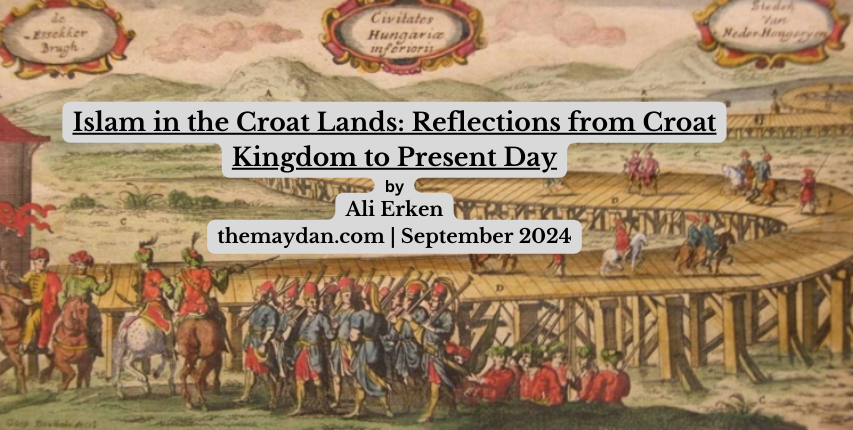
Croats are Catholic south Slavs with a distinct identity from their Orthodox and Muslim kin brothers, namely Serbs and Bosnians. The Kingdom of Croatia, which lasted from the tenth to twelfth centuries, was established along the borderline of today’s Austria, and Italy, lying down along the coasts of the Adriatic Sea. After the fifteenth century, this Kingdom was partitioned between the Habsburg and Ottoman Empires. In 1918, the Kingdom of Serbs, Croats, and Slovenes was established, which was replaced by the state of Yugoslavia in the later decades. An independent state of Croatia was founded in 1991. A sizeable Bosnian Muslim minority, mostly originating from Bosnia and Herzegovina, today lives in Croatia. However, we have very limited information about the history of Muslim communities in the region, despite the fact that most parts of today’s Croatia have a deep heritage of Islamic culture as Bosnia and Herzegovina. The article explores the diverse Muslim heritage in the region where today’s Croatia is located.
Recent literature has significantly contributed to the topic and provided us with some preliminary sources. Vlasic and Aydemir, for example, demonstrate that the Ottoman State began conquests in Slavonia, which lies across northern Bosnia, from 1520 onwards. Slavonia should not be confused with Slovenia, which is today an independent state. Initial contact with the Croat forces had taken place in the Battle of Krbavska in 1493, where the Ottoman army gained a victory, but the expansion towards Slavonia accelerated during the reign of Suleiman the Magnificent.
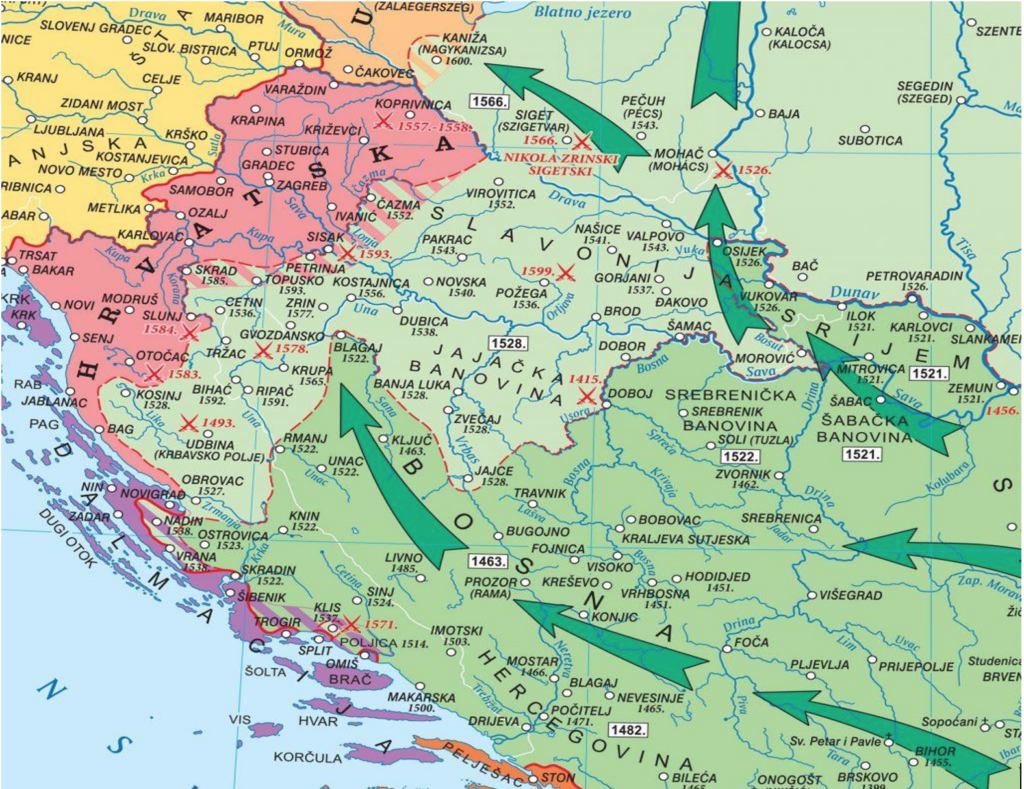
Military campaigns in the 1520s and 1530s aiming to capture Hungary and Austria from the Habsburg Empire ended in a score of territorial gains along vast areas of geography. Initially, Belgrade, today the capital of Serbia, was taken in 1526, and the towns of Slovonski Brod and Osijek came under Ottoman rule in 1529.
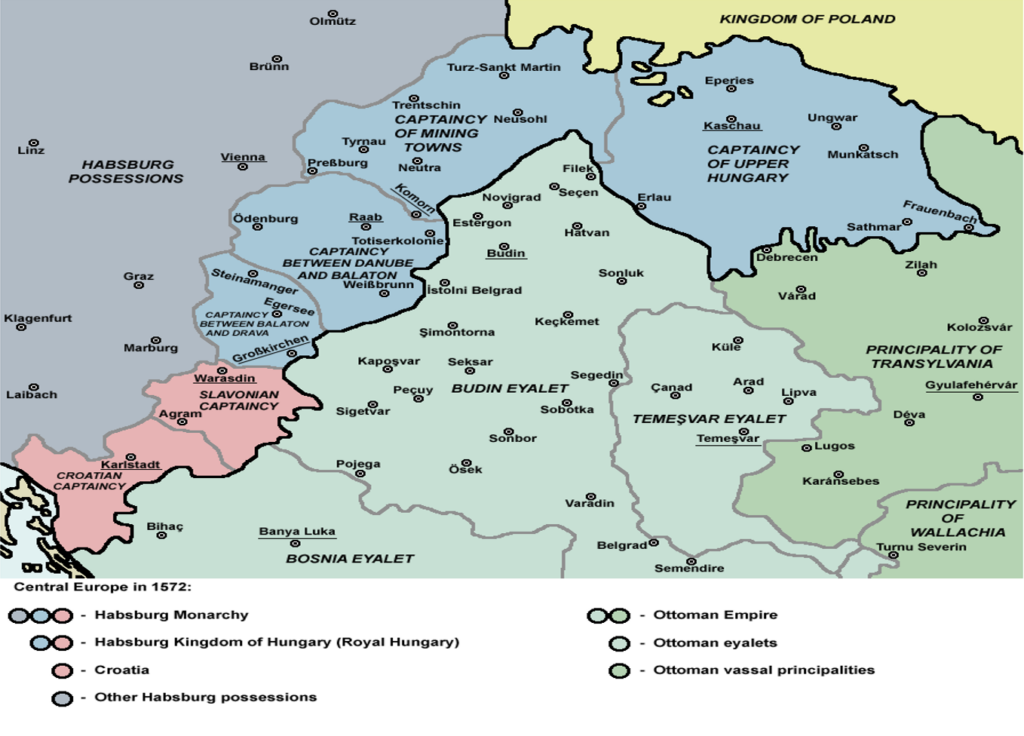
The Ottoman State gradually expanded over three different parts of today’s Croatia: Slavonia, Dalmatia and Krajina. Between 1530 and 1600 Ottomans took control of many other towns like Vukovar, Grojani, Kutjevo, Pozega, Cernik, Virotivica, and Kostanic. All these towns lay along the Slavonia region. Zagreb, today the capital of Croatia, was not a big town like it is today, and remained on the eastern side of the military route, resulting in its not being in the control of the Ottomans. A campaign by the Telli Hasan Pasa, who was from Predojević family of Serbian origin, advanced to Siska (Sisak) in 1593, nearly 40 km far from Zagreb, but the siege failed and Hasan Pasa lost his life during the battles. Most of the Adriatic coast, namely Dalmatia and Herzegovina regions, and the towns of Sibenik, Klis, Knin, Obrovac, Skaradin, were taken by the Ottomans. These regions remained under the Ottoman rule until 1683.
Croat people were also living in the Bosnia and Herzegovina region. Many people of Croat origin entered the devsirme system under Ottoman rule.
Devşirme system took non-Muslim teens from their families mostly from the European lands of the Ottoman state, and trained them to be top-rank bureaucrats or military commanders.One of the early Ottoman statesmen of Croatian origin was Hersekli Ahmed Pasa (d.1517), who was not directly a product devsirme system. Ahmet Pasa was the son of a noble Croat family, Herzegovics, in Bosnia and his original name was Stephan. After being sent to Istanbul as a captive, he became Muslim and was trained in the Ottoman institutions. He was appointed as the Grand Vizier, who held the highest position after the Sultan, five different times during the reigns of Sultan Mehmet Fatih II, Sultan Bayezid, and Sultan Selim. Another famous name that came from the devsirme system was Rustem Paşa (d.1561), who became one of the longest-reigning and strongest grand viziers of Sultan Suleyman I. Though there are still conflicting views about his background, many reliable sources indicate that he was of Croatian origin and came from the Opukovic family. He was born in Skradin and brought to Istanbul at a young age through the devsirme system. Rustem Paşa was a controversial figure in the Golden Age of the Ottomans, loyal to Sultan Suleiman but severely criticized for his role in the execution of Sultan Mustafa, Suleiman’s oldest son. Opponents of Rustem scorned him for previously being a “pig shepherd” during his childhood and reaching the position of the strongest bureaucrat in the Empire through personal maneuvers.
Among the other prominent bureaucrats of Croatian origin was Kuyucu Murat Pasa (d.1611) who took the title of Kuyucu (digger) because of his harsh punishment of rebellions in Anatolia. It is recorded that he was originally a Bosnian Croat. Likewise, Siyavus Pasa (d.1602) and Dilaver Pasa (d.1622) were the two other Grand Viziers of Croat origin during the late 16th and early 17th centuries.
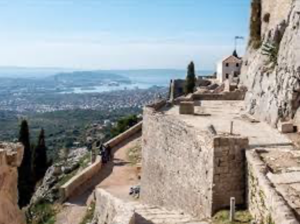
Lastly, statesmen of Croatian origin enjoyed a high reputation in the Ottoman naval forces. Piyale Pasa, for example, who was trained in the Enderun, and served as the Commander of the Ottoman Naval Forces (Kaptan-ı Derya), was known to be from the Dalmatia region. He played a significant role in the building of Ottoman naval supremacy in the Mediterranean Sea. Another Dalmatian admiral and later Kaptan-ı Derya was Silahdar Yusuf Pasa (d.1646), who came from the Croat Maskovic family in Vrana. He played a significant role in the taking of Crete Island in the 17th century.
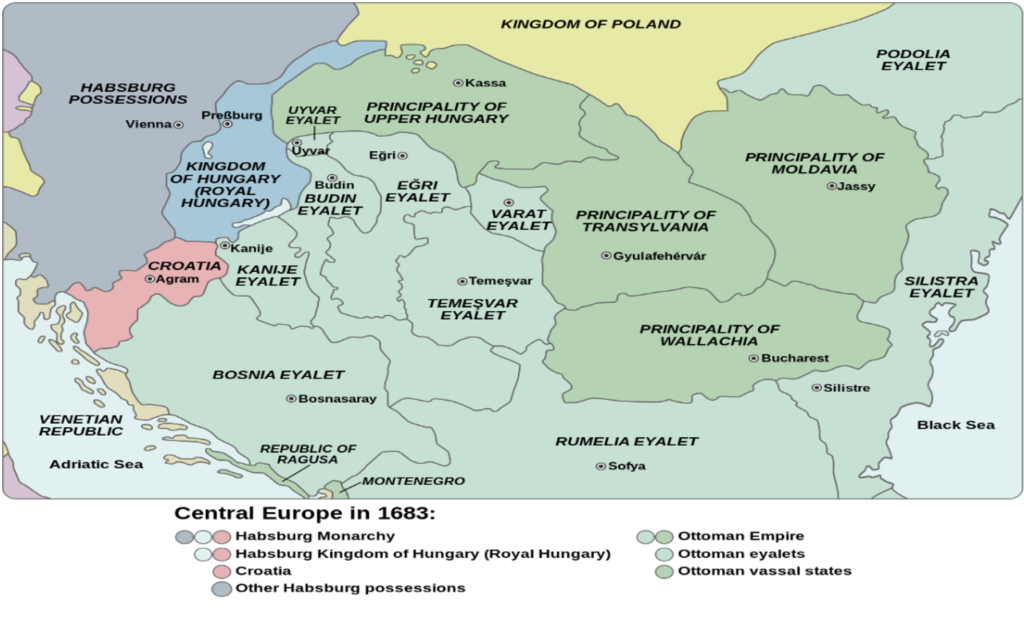
Of course, many commanders of Croatian origin also fought against the Ottomans during the sixteenth and seventeenth centuries. What seems interesting, however, is the fact that in today’s popular culture and public memory in Croatia, those commanders and bureaucrats of Croatian origin who served in the Ottoman state are almost absent. On the other hand, such commanders as Nicola Jurišić, who defended the Castle of Gunz for four weeks against Sultan Suleiman on his campaign to Vienna in 1529, and eventually delayed the siege of Vienna to the extent that the Ottoman forces did not find enough time to capture it, has a strong reputation in Croatian national memory.
This erosion of Ottoman heritage in contemporary Croatia was not only limited to public memory.
In a recent and quite comprehensive study by Karac and Zunic, it is underlined that the Islamic Heritage in Croatia was initially destroyed during the early Reconquista of the late seventeenth century, and contemporary ideological antagonism against the Ottoman past led to the perishing of remaining cultural sites.The records indicate that there were hundreds of mosques, lodges, and schools in those towns previously ruled by the Ottomans between the sixteenth and seventeenth centuries. It is almost impossible to locate most of the monuments, but recent works have deciphered new details about the location and character of such old buildings. Monika Gusic, a historian of the seventeenth century, maps out some of those mosques converted to churches in Slavonia and Dalmatia.
For other details, we rely on the account of Evliya Celebi, the Ottoman Traveler in the seventeenth century, who penned a long section in his Seyahatname. on the history of social and cultural life in these regions. He notes that Pozega was one of the largest centers of the Muslim community with nine mosques and one Halveti Lodge. Sultan Süleiman and Sultan Selim mosques, both of which were converted from churches to mosques, were central venues of worship of the time. He shared a similar observation for the town of Kutjevo, where a predominantly Muslim population flourished, and Osijek, where 12 mosques along with a famous bridge of Sultan Suleiman were constructed. No mosques are visible in these towns today and we do not have a trace of the wooden bridge of Sultan Suleiman.
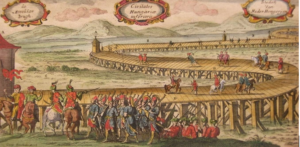
Yusuf Paşa Maskovic, for example, helped raise many vaqıfs in the region and Ferhad Pasha Sokolovic, who was originally of Serbian origin, sponsored large vaqıfs for the construction of monuments in Dalmatia. Ibrahim Paşa Mosque in Dakovo, which was one of the largest places of worship in the region, ran its services under the auspices of vaqıfs led by the Memibegovic family. We also understand that sufi dervishes were actively taking place in the spread of such monuments across the region. In Pozega the records note that the masjid of Vidovci was built in 1573 by a dervish named Hüseyin Dede. Lastly, Evliya Çelebi shares the story of Sheikh Ali Gaybi, who was serving in the lodge in Gradishka town, and saw a dream that Ottoman rule would end in Slavonia in the future. Today, there is no lodge left in Gradishka, which is in the Serbian Republic of Bosnia and Herzegovina region, and Ottoman rule in the Slavonia region has ended.
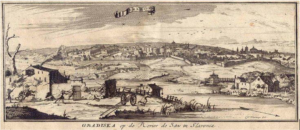
Ottomans ruled over different parts of Croatia from the 1490s to the 1690s. Though much research has been done on the history of the Muslim communities in Ottoman Europe and Andalusia, literature on the heritage of past Muslim cultures in these places is very limited, even among the other studies on the Balkans. Recent works have provided us with a depth of new information about this legacy and available documents are waiting for researchers.
Statesmen of Croatian origin sponsored the construction of fountains, imarets, schools, sufi tekkes, and other masjids in their hometowns.
The war and the attacks against Bosnians during the disintegration of Yugoslavia between 1991 and 1995 caused the deaths of thousands of Bosnian Muslims. After this war, Bosnia-Herzegovina and Croatia continued to exist as two different states, but the Bosnia-Herzegovina state was governed by a tripartite structure consisting of the Bosnian-Croat Federation and the Serb Republic. Almost all of the regions subject to this article fall within the borders of today’s Croatian state. After 1995, the Muslim population in Croatia increased steadily, mostly immigrants of Bosnian origin. The community gained some new rights after Croatia became a member of the European Union in 2013, and opened social complexes in Zagreb and Sisak. However, the historical heritage in Croatia still awaits further exploration and public memory among the Muslim community changes as new findings emerge.
Ali Erken teaches at Marmara University, Institute of Middle East and Islamic Countries. He holds PhD in History (Oxford), authored a book and articles on the history of modern Turkey and Balkans.

